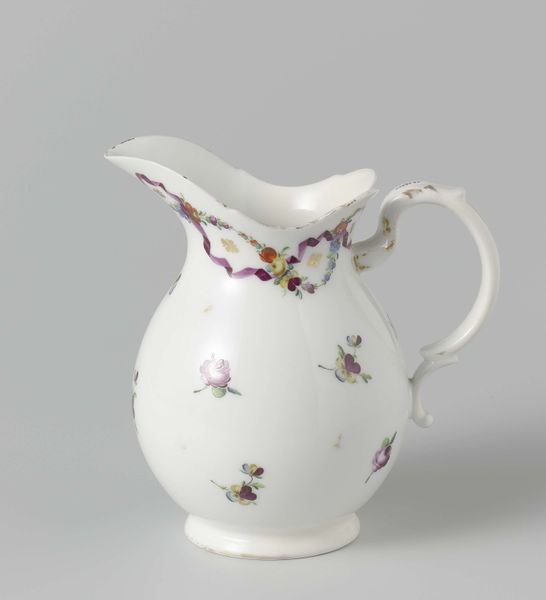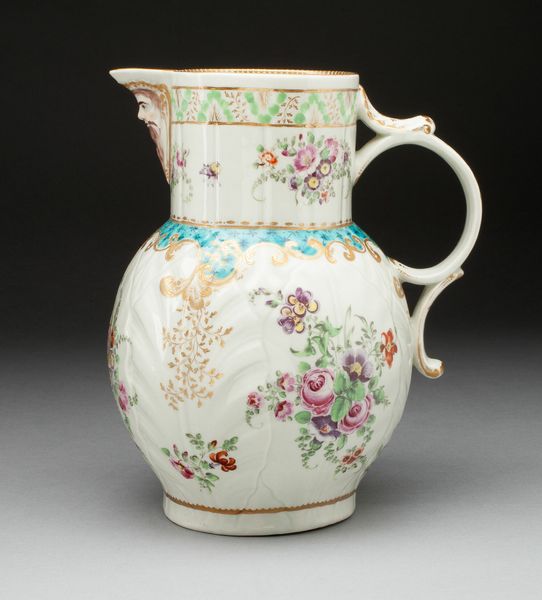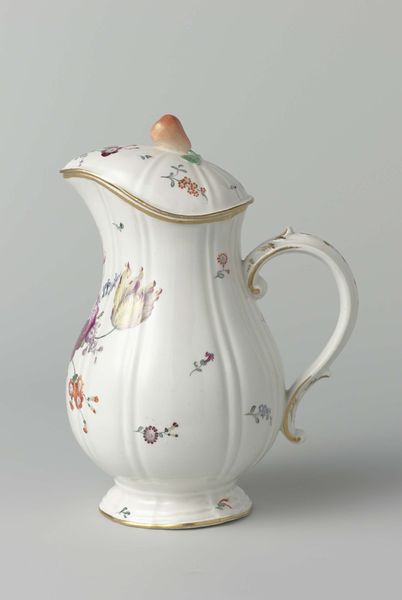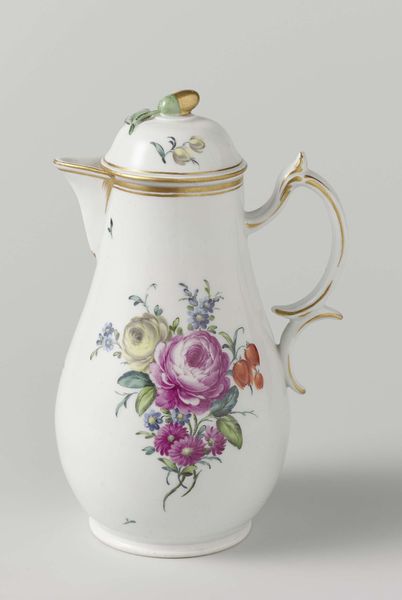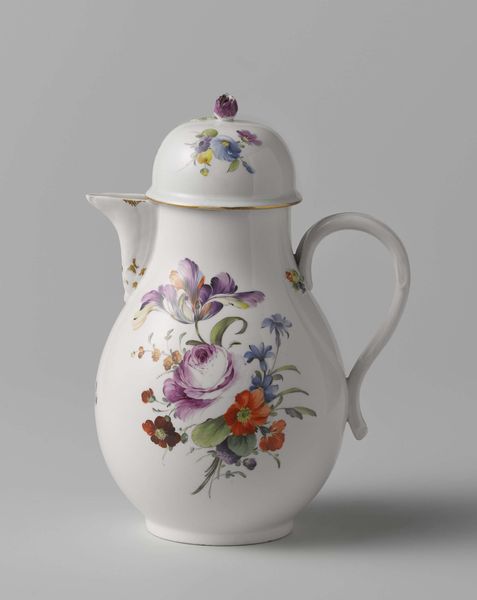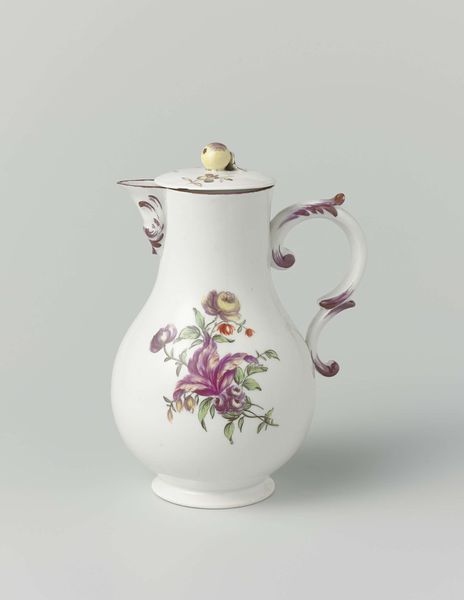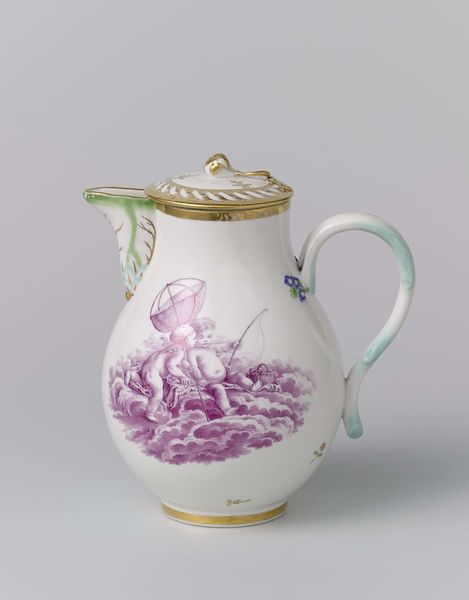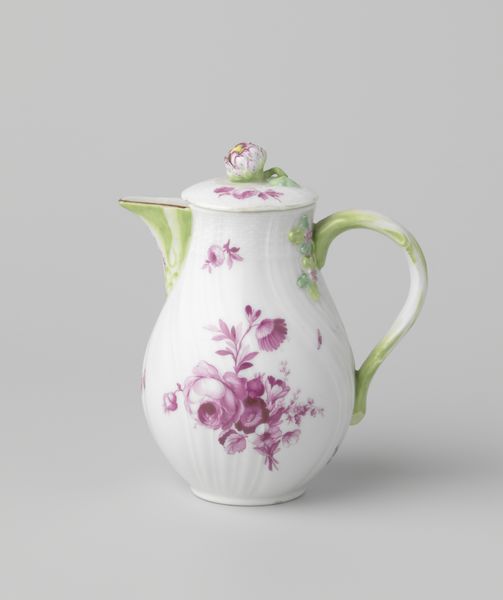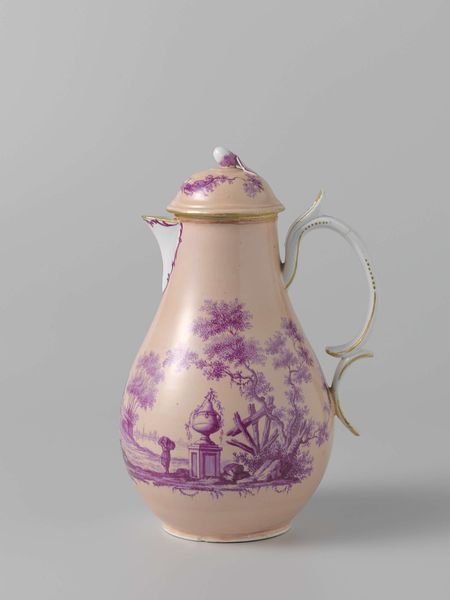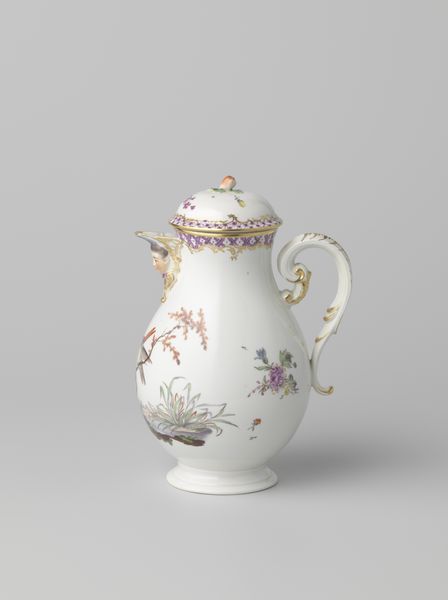
ceramic, porcelain
#
ceramic
#
porcelain
#
stoneware
#
ceramic
#
decorative-art
Copyright: Rijks Museum: Open Domain
Editor: Here we have a delicate porcelain milk jug from the Weesper porseleinfabriek, crafted sometime between 1759 and 1771. I'm struck by its understated elegance; it's a utilitarian object elevated to art. What do you see when you look at it? Curator: It's easy to see it as merely decorative, but I see a fascinating object steeped in social history. Porcelain, especially in that era, was a signifier of wealth and status, wasn't it? The floral designs, so carefully painted, speak to a particular kind of consumer culture and gendered expectation. Who do you think was pouring milk from this jug and in what social context? Editor: So, it’s not just about aesthetics but about who possessed and used these objects and the social performance surrounding them? The painted flowers are beautiful but also serve as clues, then. Curator: Precisely! Think about the labour involved. These factories relied on specific class and racial dynamics, didn't they? And the tea or coffee this milk accompanied? Products of colonial exploitation! Looking at something seemingly innocent, we have to acknowledge these intersecting layers of privilege and oppression. Does seeing it through that lens change your initial reading? Editor: It definitely does. I was caught up in its beauty, but understanding its place in this larger system, it's a stark reminder that art, even something like a milk jug, doesn't exist in a vacuum. Curator: Absolutely! This forces us to consider not only the craftsmanship, but also the economic and power structures that enabled its creation and determined its use. Considering these intersections allows for a richer and more critical engagement with the artwork, don’t you think? Editor: Yes, absolutely. Thanks, I'll never look at a porcelain jug the same way again.
